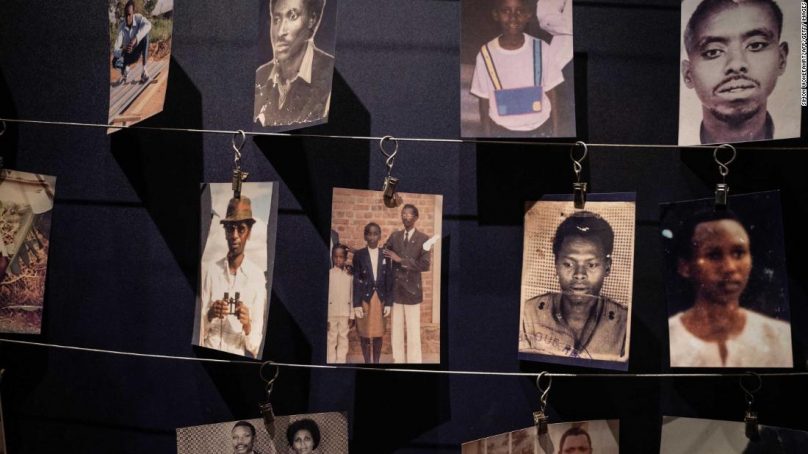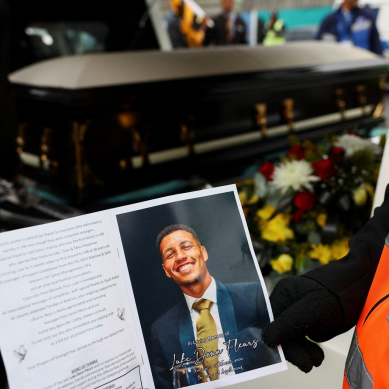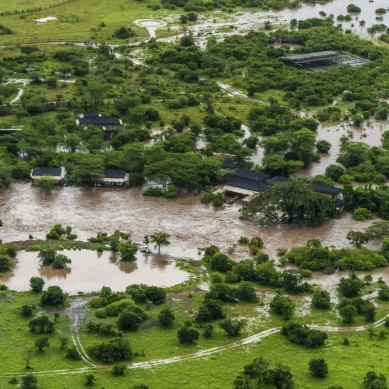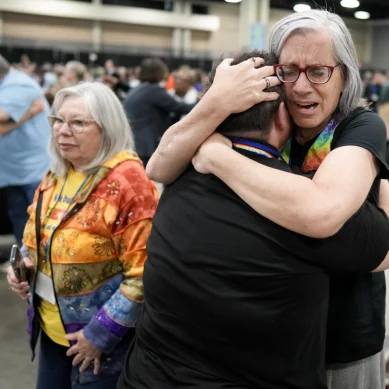
Hundreds of thousands of people have died in the Great Lakes Region of Africa over the past four years. Most of them were innocent civilians massacred by armies or militias or decimated by disease or starvation as they fled from danger.
These horrors can be traced to intense struggles overpower carried out by leaders-struggles involving the politicization of ethnicity and a perverse dynamic of violence and fear. The conflicts have been based in part on intellectual foundations, on mental maps of history.
It is these competing visions of the past-the politics of history-that I explore here. Such inquiry is of more than academic interest in contemporary Rwanda. The debate about the nature of the country’s history is central to the process of political reconstruction; the post-genocide government in Kigali has not only to deal with the trauma of a whole people and society, but it also has to consider how its policies will be interpreted within the context of various conceptions of Rwanda’s past.
A key element in politicising ethnic cleavages in the recent history of Rwanda has been the development and propagation of a corporate view of ethnicity.’ The generalisation of blame was dramatically evident in the genocide against Tutsi in Rwanda in 1994 when hardliners in the Hutu-dominated government labelled all Tutsi in the country enemies of the state. The genocide was calculated to exterminate them; the hateful vitriol used against the Tutsi in the press and on radio broadcasts illustrated this thought process.
A corporate perception of ethnicity was also evident in the recent massacres of Hutu refugees in the Democratic Republic of Congo (formerly Zaire) in 1996 and 1997. During and after the genocide in Rwanda in 1994, hundreds of thousands of people (mostly Hutu) fled to neighboring countries – primarily Tanzania and Zaire – but some also fled to Burundi and Uganda.For the Tutsi-led government of Rwanda that assumed power in July 1994 after the genocide, the refugee camps in Zaire became a particularly irritating problem. Fearing reprisals, most of the refugees refused to return home; meanwhile these camps were being used as bases for guerrilla attacks from Zaire against western Rwanda.
Among the refugees in the crowded camps along Zaire’s eastern border with Rwanda and Burundi were persons who were certainly guilty of genocide, including former soldiers and officers of the Rwandan armed forces (the Rwandan army of the pre-1994 government) and members of militias such as the Interahamwe. They posed a serious threat then, and they still do today. But such individuals constituted perhaps 30,000 to 50,000 people in the camps – five per cent of the total refugee populations. To be sure, others in the camps were indirectly implicated in the genocide, but many were not.
Moreover, the majority of refugees in the camps were women and children who were neither major perpetrators of the genocide nor a military threat. In the Goma area, for example, 80 per cent of the people in the camps were women and children.
Beginning in October 1996, the camps in Zaire were attacked by troops of the Rwandan Patriotic Army (RPA), the army of Rwanda’s post-genocide government, with help from soldiers of Laurent Kabila’s Alliance of Democratic Forces for the Liberation of Congo/Zaire (ADFL). After the camps were destroyed, many of the Rwandan refugees returned to Rwanda.
The remaining refugees who also survived attacks against the camps, probably several hundred thousand people, fled west into the mountains and forests of eastern Zaire. During the war in Congo (which was fought not so much against President Mobutu Seseseko’s army as against Rwandan refugees), soldiers from the RPA and the ADFL pursued the refugees for months, attacking their small encampments and massacring men, women, and children at will.
An example will illustrate how Hutu were collectively held responsible for the genocide and tracked down, even on foreign soil. In March 1997, more than 100,000 of these refugees found themselves blocked at Ubundu, on the banks of the Congo River. To Immaculee Mukarugwizwa, a widowed former schoolteacher, their prospects seemed grim:
“We are hungry and we are sick but above all we have lost all morale. Our elders are shrivelled and dying and our children already look old. Are all of us guilty of genocide, even these little children? We have been chased through the bush like animals. And in three days, Kabila’s men will be upon us again, leaving 100,000 of us with a choice of death under their bombs or in the jaws of crocodiles.
A corporate view of ethnicity, which targeted all Tutsi during the genocide, was also used in this case to label all Hutu refugees as genocidaires (persons who helped perpetrate genocide) and this view seemed to be part of a political programme of vengeance directed against Hutu. In deploring the tendency to globalise blame for the genocide in Rwanda to all Hutu, the former schoolteacher Mukarugwizwa’s plea highlights a more general perception of ethnicity; such a perception of ethnicity brought with it tragic consequences in the past-and those continue into the present.
In these situations, explaining how and why the uses and abuses of power led to violence in the past could serve as an important lesson to leaders who wish to build a different society in the future. Yet, not surprisingly, in such a polarised atmosphere, historical reconstruction is itself highly contested. Here, with an intensity that surpasses the normal cliches, there is no single history; rather there are competing “histories.”
Vigorous debates have resonated before now over Rwanda’s history. There were, for example, divergent interpretations of the Rwandan Revolution of 1959 as well as different views regarding the importance of ethnicity in Rwanda’s precolonial (and colonial) past.
Consider the following two interpretations of the Rwandan Revolution: One view holds that the changes from 1959 to 1962 in Rwanda were engineered by Belgian colonial authorities and the Catholic Church. Although previously these powerful external actors had supported the monarchy and its political structures dominated by Tutsi chiefs, in the 1950s they switched support to the Hutu majority.
From this perspective, manipulation by external forces was the main reason for political violence in Rwanda during the terminal colonial period, as well as the cause of the collapse of royal power, the reversal of power relations, and the subsequent exodus of many Tutsi into exile.
A contrasting view claims that while some Belgians and leaders in the Catholic Church supported change, it was Hutu leaders and the rural majority in Rwanda who effected the revolution, by reacting to the double colonialism of rule by Tutsi and Belgian authorities. In this view, a Hutu counter-elite demanded an end to the privileging of Tutsi in employment, education, access to political power and economic advancement and thereby an end to discrimination against Hutu.
Rather than emphasising external actors, this view of the Rwandan Revolution highlights rural impoverishment, grievances over exactions by chiefs and insecurity of land tenure as central factors in the conflicts that accompanied decolonisation and the victory of Hutu candidates in the elections of 1960 and 1961.
There are also contrasting views of the history of relations between the three main ethnic groups in Rwanda. One view holds that in the precolonial past, Tutsi lived in symbiosis and harmony with Hutu and Twa. European colonialism created cleavages and divisions between Hutu, Tutsi and Twa and also put an end to the social mobility that had been possible in the past. Therefore, some who use this line of reasoning assert, in order to overcome the divisions that have led to violence, the ethnic categories should simply be abolished and the terminology of ethnic groups forbidden.
A different version of these relationships asserts that Hutu were conquered in the distant past by clever and wily Tutsi, who imposed an oppressive, exploitative rule on Hutu and made them the servants of Tutsi.
Colonial rule under Germany and then Belgium exacerbated and intensified (but did not cause) divisions that were already there. From this perspective, abolishing the terms “Hutu,” “Tutsi,” and “Twa” is portrayed as a ploy promoted by a historically dominant minority trying to maintain power. Given the history of discrimination in Rwandan society, some proponents of this view have argued, it is only by retaining the categories that one can measure progress in redressing inequalities from the past.
As will be evident, the first versions in both debates noted above tend to be advanced by those wishing to rationalise rule by Tutsi; the second versions are more characteristic of powerholders in the Hutu-dominated governments that ruled Rwanda from 1961 until 1994. But there is a noteworthy convergence as well: at various times, hardliners in both groups have accepted the myth introduced early in the colonial period by Europeans about ethnic pasts. Tutsi were from different racial stock; they came to Rwanda from the northeast; and they were superior to Hutu in both intelligence and political abilities.
None of these positions, however, provides an adequate explanation of either the Rwandan Revolution or the historical dynamics of ethnic relations in Rwanda. Rather, they reflect political positions more than valid historical reconstruction. Each tends to use a monocausal and static explanation for complex interacting processes that have varied over time. In fact, synergy, not singularity, is the bedrock of Rwandan history.
- A Tell report / By Catharine Newbury, Ethnicity and the Politics of History in Rwanda, Africa Today











